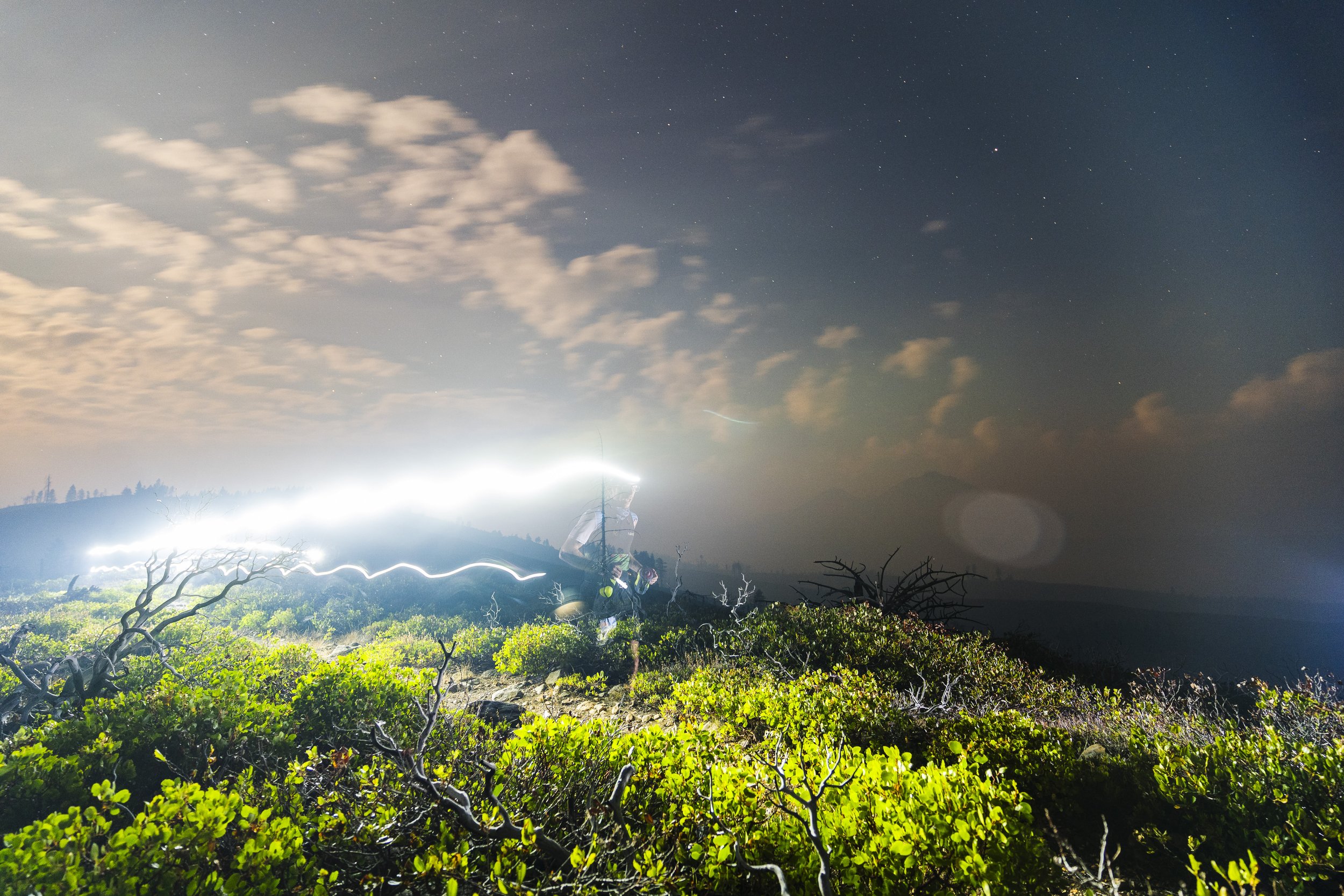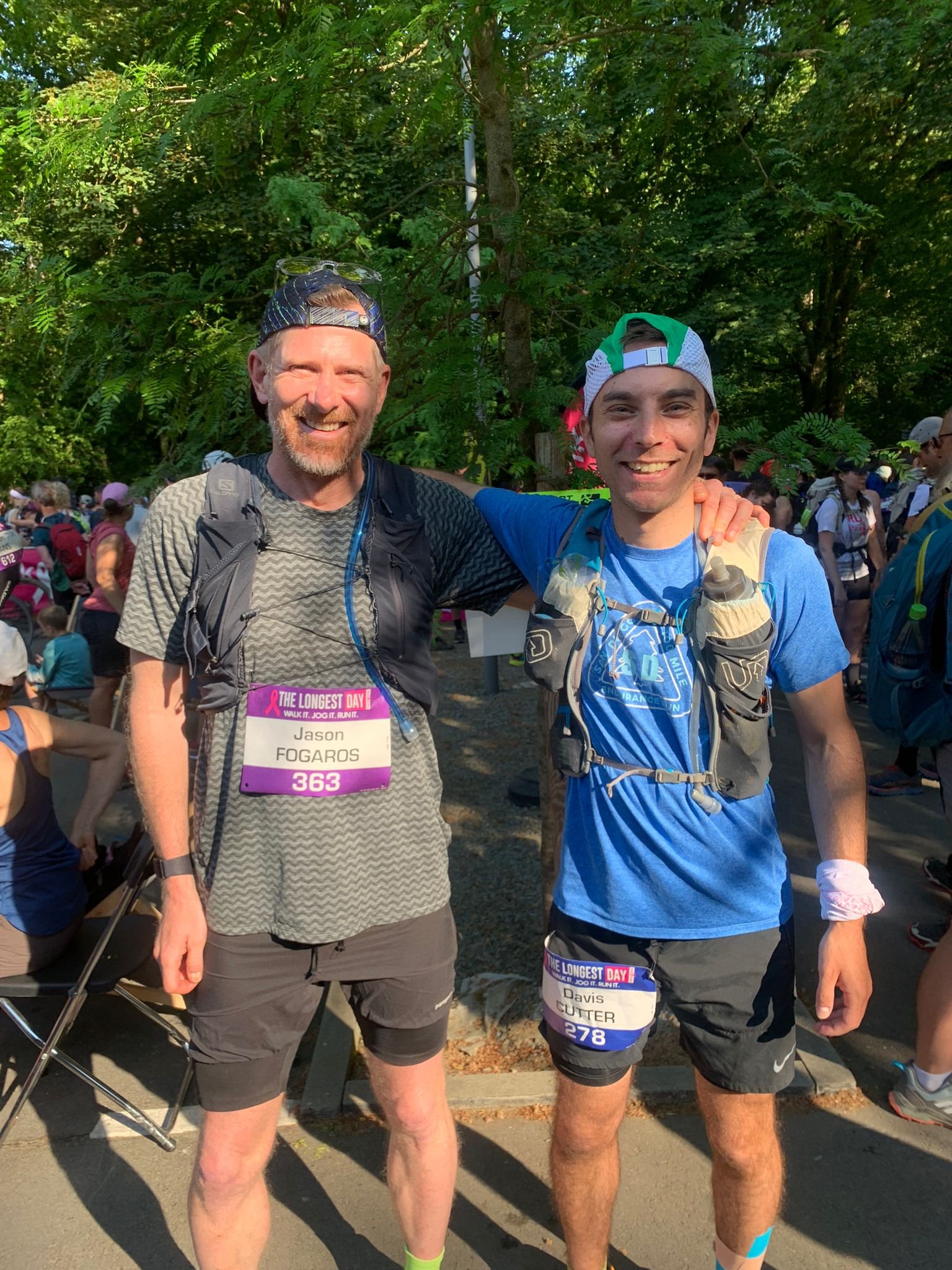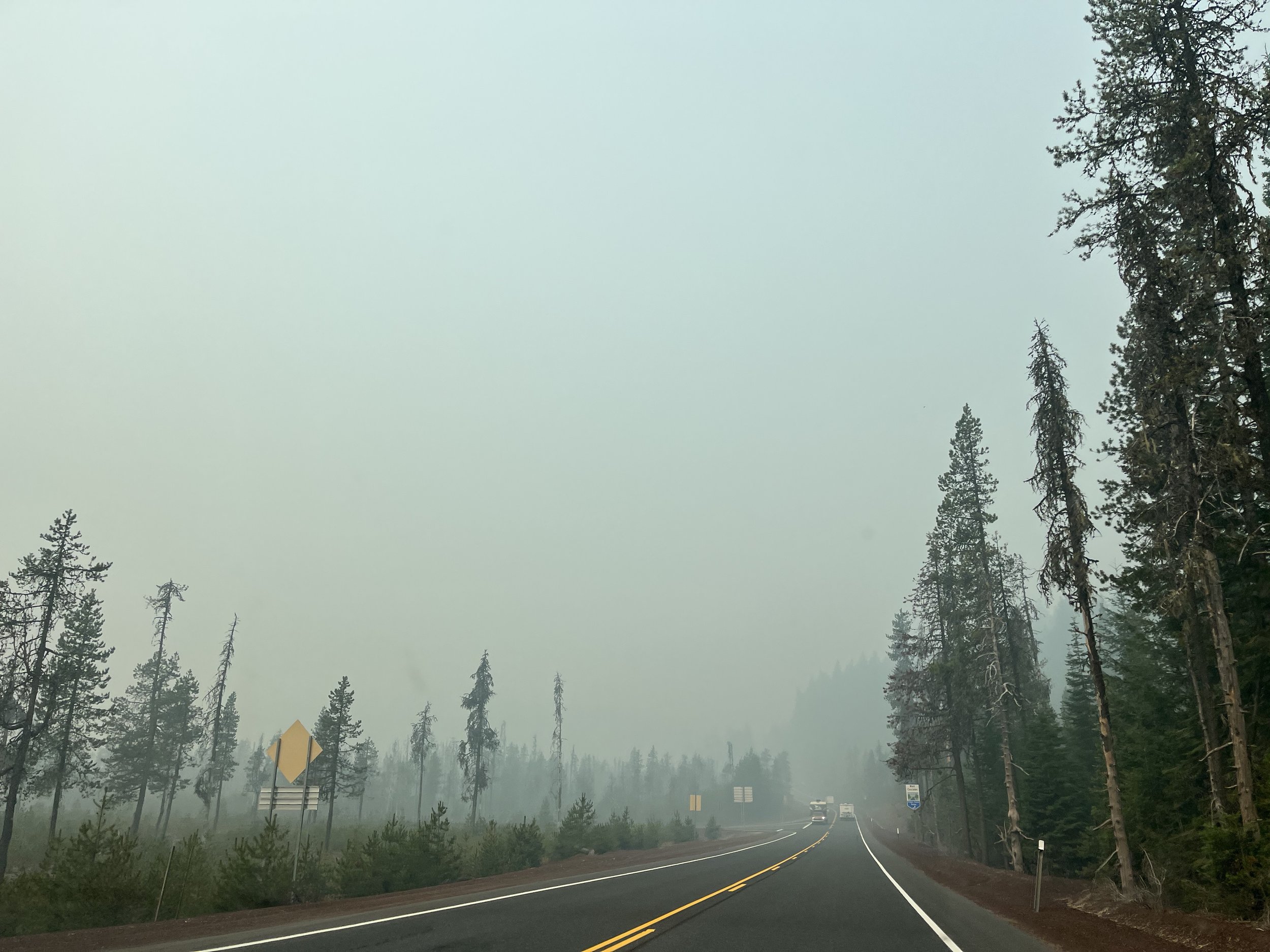Oregon Cascades 100 & 2023 Recap
Mile 82 at the Oregon Cascades 100. Photo credit James Holk & Alpine Running
2023 was a great season, capping it off with a win at the Oregon Cascades 100 on August 26th! It feels good to get my first 100 mile win at such a fun and beautiful race.
Since OC100 was (likely) my final race of 2023, I’m going to recap the full season here, with a longer focus on the OC100.
Kicking things off at Boston Marathon:
My season started at the Boston Marathon in April. Having grown up in Boston, I’ve spectated the race several times, but hadn’t run it myself. So, this was was a long-time-coming. I usually shy away from road marathons and gravitate toward trail & ultras, so this was only my 2nd road marathon (qualifying in Bergen, Norway last year). I’ve complained about the challenge of living in Amsterdam and trying to train for mountain events, but it served me just fine for the Boston course.
I had a shortened training block following my wedding & honeymoon in January. After traveling to Boston a few days before the race, I had a strong run, setting a PR with a 2:47. I certainly felt in the minority in wave 1 without any (carbon-plated) supershoes (I sported Topo Ultrafly’s…and I think I’ll have to make the Supershoe investment for the next road marathon I do). Perhaps Boston 2024?
Running Boston was also a humbling experience. I’m used to being toward the front of the pack at ultra events, but coming in 1,000th+ place in Boston was a nice reminder of the shear number of great runners out there.
My nieces and newphews sporting custom “love you to the sky Uncle Davis” t-shirts 🥰
Exploring the Austrian Alps
The Boston Marathon gave me some solid foundational legspeed heading into “ultra season” where I’d need to start logging some longer days. In May I headed to the Austrian Alps, specifically to the Kaiser Mountains. I circumnavigated Kaisers, also known as the the “Kaiser Crown” route, which took a total of 4 days, 88.7 miles and 19,956ft of gain (6,082m). It was gorgeous.
I highly recommend this route for runners/hikers of all skills, as it has great hütte system to provide support throughout, and easy access from Munich! I’m grateful to have run in some incredible places in the world… The Austrian Alps just might take the top spot.
Longest Day 100k - Spa, Belgium
The Kaiser Crown set me up well for the kickoff of my first ultra of the year, The Longest Day 100km in Spa, Beligum. It was one of the first hot days of summer, and many of us were not well acclimated to the heat.
One thing I learned from The Longest Day 100km was that I needed to dial-in my hydration plan. Race-day ended up being the first hot day of summer, registering a surprising 87 degrees farenheit (30c). This wasn’t my A-race for the season, but was a good warm-up, and reminder how disciplined you need to be to execute a full-day effort.
Startline at Longest Day 100km in Belgium
When I crossed the finish line in 11 hours in 5th place, I realized I had been consuming close to 2 liters of water per hour (!) and had only urinated once —at mile 10. I didn’t urinate once for the last ~9 hours of the race. From a physiological standpoint, this had to mean that I was sweating nearly 2 liters per hour.
I’ve felt confident in my nutrition plan during races for several years now, but my fluid and electrolyte intake has been mostly dictated by feel and instinct. I knew that intense exercise without urinating for 4+ hours time implied I was likely dehydrated. It was time to get more calculated. I didn’t adequately understand fundamental data to inform my hydration plan: how much I was sweating in varying temperatures, how much sodium was in my sweat, how much water I should be drinking, or what product(s) I should be using. These were all mostly unknown.
The day after The Longest Day, I signed up for a sweat test with Precision Hydration to determine how much sodium I am losing (per liter of sweat). This has proven to be invaluable. I now know that I sweat 676mg of sodium per liter of sweat (which makes me on the lower end of the sweater spectrum).
Prior to understanding this data, I was simply under-utilizing electrolytes…and for the products I was using, the sodium concentration was quite low. I am now precise with my electrolyte intake, and used a combination of the PH500 tablets and 250mg capsules during the Oregon Cascades 100.
Plantar Pain:
After running a “The Longest Day 100km” in Belgium in early June, I came down with plantar fasciitis. For runners that have dealt with PF, it’s not an injury you can “run through”. The injury is finicky…the most painful steps of each day are the first ones…and then it loosens up. Running can “feel” good, but ultimately cause more damage.
I ended up taking 10 days off from running in mid-June, and mixed in biking to stay fit. I spent a lot of time with Pieter and his team at The Art of Physio in Amsterdam, and went to the gym 5x per week for strength training. “Strength” might be a stretch of a term here….I was mostly doing toe yoga, calf raises, and stability work. I stayed away from the heavy weights, focusing on the small muscles in my foot, calf and ankle that would enable my plantar to heal.
After about 7 weeks, the PF was mostly gone, but pain had shifted into my pinky toe. I continued with lower mileage than I would have liked leading up to a 100 miler, but tackled several 4-6 hour runs that made me feel confident I was fit enough to toe the start-line.
The week leading up to Oregon Cascades 100, my pinky toe was still bothering me. It wasn’t until 1-2 days before the Oregon Cascades when the fact that I realized this was likely a case of athlete’s foot, and had nothing to do with my plantar fascia at all. I applied medication and the athlete’s foot healed up…but it was a good lesson in understanding even the smallest ailments can cause major stress leading up to a race.
Final Training Block:
Lucy and I packed up and left The Netherlands for good on August 1st. This was a bittersweet moment; spending the last 4.5 years in Amsterdam has been incredible, but we’re also excited for our next chapter to travel and experience the world together for the next ~6 months!
My last 3 weeks in The Netherlands were focused on two things: our international move, and running. In our final 3-weeks, I took 6 trips on a 90-minute train (one way) to find the closest “hill”. I got to know this hill, called the Posbank, very well over the past few years. I know every dip and curve, every undulation of the trail. It was fitting that I’d spend so much time with this old friend before departing the country. It was like saying goodbye to a wise old soul.
I even created a Strava segment for this infamous “dutch mountain” loop before leaving. If you live in the Netherlands, go and find it!
It’s safe to say I was ready to be done sitting on trains when August 1st came, and we were USA-bound!
My core training ground for the Oregon Cascades 100. It’s a 90 minute train ride from Amsterdam.
We donated a big portion of our belongings before leaving The Netherlands. And in typical Amsterdam fashion, we had to move everything out through our window!
Our last night in Amsterdam. We will miss our canal walks!
Oregon Cascades 100:
Lucy and I spent the month of August visiting family in Boston and Portland, respectively, before traveling to Sisters, Oregon for the race.
When we arrived to Sisters on Monday before the race, we were greeted by dense smoke from wildfires near Eugene. The Air Quality Index (AQI) was reading between 500-700 on Monday and Tuesday. The race directors said they’d wait until the last minute to decide if the race was on…but anything over 150 AQI they’d have to make some “tough calls”.
5 days before the race…just outside of Sisters. AQI was around 500
Luckily, the wind direction was in our favor, and by Thursday morning, things had cleared up! I appreciate the race directors for their communication on this topic, it was very well handled!
How quickly the air can change! Race morning, somewhere near Bend. Photo credit James Holk & Alpine Running
Pre-race crew meeting - ready to roll with the best crew out there!
5 minutes until takeoff! 🚀
Miles 1-30:
The race kicked off at 6am. My plan for the race was to start conservatively for the first 20 miles, most of which are uphill. The gradients of 2-4% can fool you easily, and make you think you’re not working as hard as you actually are. I monitored my heart rate and breath to keep things in control.
I let 20+ runners go ahead in the early miles of the race, and felt comfortable with this from a competitive standpoint. I was confident in my plan, and actively tried to avoid thinking about what “place” I was in until mile 70, because it’s all irrelevant until then.
Looking back at the splits, I was in about 15th place by mile 15.
Somewhere near mile 10 (in the middle). Photo credit James Holk & Alpine Running
It started to get hot around 10am, but I knew I wouldn’t see my crew for another 2.5 hours, which meant I couldn’t apply my cooling strategy (ice vest + ice hat + cold water + sunscreen + carry an extra bottle of water) as early as I’d have liked to. I planned for this, however. So, I slowed down a bit, and focused on eating and drinking.
Photo credit James Holk & Alpine Running
Elevation profile
Course profile. There’s 12,000 feet of elevation gain packed into the first half of the course, with a 30-mile net downhill finish. All on smooth and buttery Oregon singletrack!
15 total aid stations, 5 of which have crew access.
Miles 30-70:
At mile 31.9 there’s a non-crewable aid station, and I loaded up on ice and pouring water all over myself. Interestingly, I noticed the the ice bag seals had yet to be broken, indicating nobody ahead of me had utilized ice for cooling.
The first crew point is at mile 36, which was a nice energy boost. I had an INCREDIBLE crew who were efficient, relaxed, and most importantly had FUN all day. A happy crew = a happy runner. A big thanks to Nancy, Steve, Anne, Bill and Lucy!
My pit stops at aid got faster and faster throughout the day…I’m estimating I spent an average of 30-60 seconds at each non-crewable aid station, and 90-120 seconds at each crewable station. Aside form this, I did not stop moving all day. Not once! Tiny breaks add-up: to urinate, catch your breath, reposition your pack, or daydream. Adopting the mentality of “every second counts” from a 1-mile race, and applying it to a 100 miler, changes the overall approach.
My deliberate focus on continuous movement was a key differentiator from this 100 compared to others I’ve run. For the first time, I didn’t stop to pee, but rather urinated while walking/running. And it’s not the cumulative time that peeing takes that made me do this, but rather the focus on forward progress. I wasn’t willing to break my flow.
My fitness wasn’t that exceptional, but I was able to go places mentally where I’ve never been before. I had a deep, singular focus: complete the race as fast as possible, and learned a lot in the process.
Running into Skyliners @ Mile 36
Loading up on ice in my Naked vest + Salmon hat
At mile 49, Swampy Lakes, I arrived and Lucy had a serious look on her face…I knew something was wrong. She informed me that Riva, my all-star pacer set to join me at mile 84, had gotten into an accident and was in the hospital with a shattered collarbone. As such…I no longer had a pacer.
Everyone has a quintessential moment during a 100 miler where something unexpected arises; this was my moment. It took me a few seconds to register the information, and nodded “okay”, and then continued back onto the trail.
(As a note - I give Riva MAJOR kudos for still coming to cheer me on at mile 84 later in the day…bearing a sling, broken collarbone, and big smile on her face!)
If there was a low point in the day, it was climbing up to Dutchman aid station at mile 56. This was the hottest part of the day, and you climb about 2,500 feet over the 15-20 miles prior to reaching Dutchman. I consciously slowed my pace and focused on drinking, timing my fluid intake to finish my last drop as I arrived into the next aid station, avoiding carrying extra weight.
When I arrived at Dutchman aid station, (mile 56) I was told I was in 2nd place (which was news to me). I didn’t want to know where I stood competitively at this point in the race, so I essentially ignored this information and kept to my race plan. That said, I do remember them saying the gap was 13 minutes to the leader.
I chugged mountain dew and grabbed more electrolytes + gels. From here, the goal was simply “get to mile 70” where the race actually started, in my mind.
Over the next 15 miles, the leader doubled his lead on me. As I arrived to Rock Creek at mile 66, the gap was 24 minutes.
Miles 70-100
At mile 73 Park Meadows, the aid station volunteers told me the gap was 26 minutes between me and the leader. I was pretty surprised I was losing so much time, because I felt like I was moving decently well. Nonetheless, I had made it to mile 70, and it was time to start pushing!
At mile 74, you start a lonely descent into Sisters from Bend. The sun was setting, so we had some reprieve from the heat, but the smoke was rolling back in.
Photo credit James Holk & Alpine Running
Photo credit James Holk & Alpine Running
I pushed hard in this section. I was glad I used 2 headlamps (one on my head, one on my waist), because the trail was a bit overgrown and technical. I could use all the light I had. Still, I took 4-5 falls on this section, stubbing a toe on a rock or root. I slowed down after falling, not wanting to risk further injury.
Descending down into Sisters, somewhere near mile 80. Photo credit James Holk & Alpine Running
Photo credit James Holk & Alpine Running
That’s me! Descending to Sisters, around mile 80. Photo James Holk & Alpine Running
At mile 84 I saw my crew at aid station “1514”. I knew I had just finished a strong section of running, and I was feeling great! My crew told me I was 13 minutes behind…the race was on! I slammed some mountain dew and ran briskly back into the darkness…
Finally, around mile 92 I saw a headlamp in front of me. The leader at the time, Travis, had been in the lead throughout the day, and ran a great race. I decided to skip the aid station at mile 92, and surge past Travis into the lead. Skipping the aid station was almost a strategic error, because I ended up without water until mile 95.6, where I’d see my crew for the final time. Luckily, I was able to hold things together until I got more water, and then pushed to the finish line…
Last lap around the track with Pops! Photo: Alpine Running
It was great to run the lap around the Sisters high school track with my Dad! I crossed the finish line in 18 hours and 1 minute. A new course record, which is nice, but I’m sure will be broken in the near future. I’m excited to see what other fast times will be put down on this course.
Lots of emotions spring-up when finishing any hundred. Gratitude, relief, and joy are top of mind.
In general, I felt less ‘broken’ upon finishing this race than any other in the past. Tired, for sure, but excited & proud of the achievement. To be surrounded by loving family was a special moment I’ll never forget.
Photo: Alpine Running
Photo: Alpine Running
Post race…a bit tired!
When you’re so tired you don’t wake up from doggy licks 😂
Gear:
Topo Ultrafly 3 shoes
Salomon S/Lab Speed Bob Hat
Injinji Socks
Petzl Actik headlamp
Nathan Speeddraw Plus 22oz bottles
Naked hydration vest
Naked running belt
































